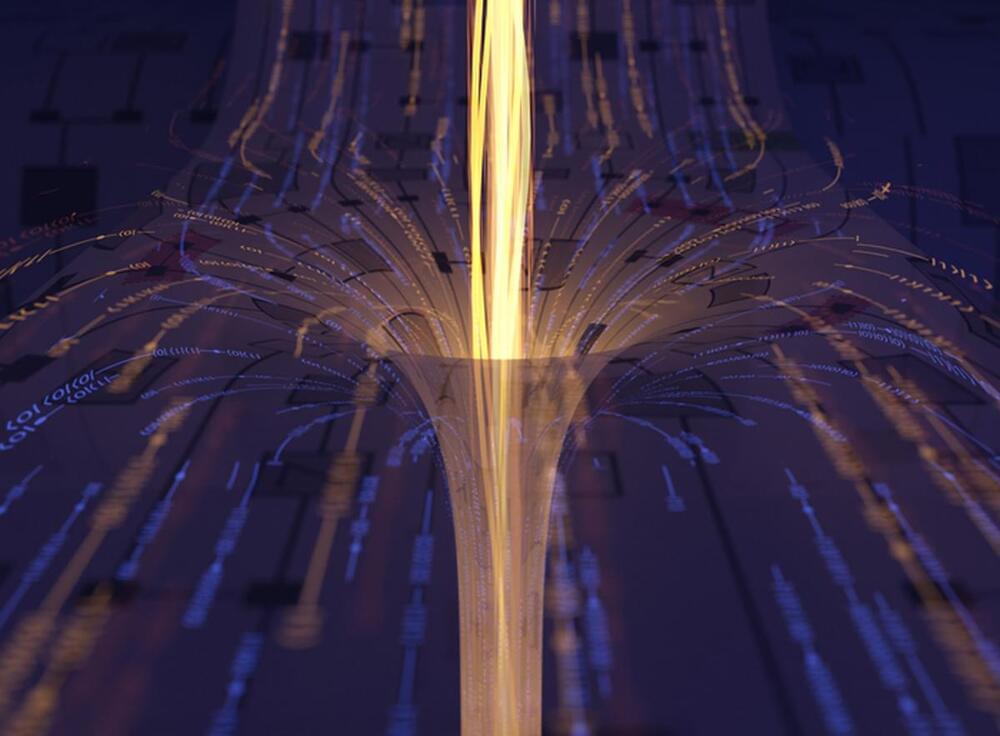An enhanced quantum manipulation technique is demonstrated, allowing fast and precise control of multicomponent atomic matterwave.



This would be great for teleporting objects for shipping across the planet or cosmos eventually. 😀
Scientists have created a “holographic wormhole” inside a quantum computer for the first time.
The pioneering experiment allows researchers to study the ways that theoretical wormholes and quantum physics interact, and could help solve some of the most difficult and perplexing parts of science.
The wormhole is theoretical: researchers did not produce an actual rupture in space and time. But the experimental creation of one inside the quantum computer – which saw a message sent between two simulated blackholes – nonetheless allows scientists to examine how they might work, after almost 100 years of theory.

Conventional light sources for fiber-optic telecommunications emit many photons at the same time. Photons are particles of light that move as waves. In today s telecommunication networks, information is transmitted by modulating the properties of light waves traveling in optical fibers, similar to how radio waves are modulated in AM and FM channels.
In quantum communication, however, information is encoded in the phase of a single photon – the photon s position in the wave in which it travels. This makes it possible to connect quantum sensors in a network spanning great distances and to connect quantum computers together.
Researchers recently produced single-photon sources with operating wavelengths compatible with existing fiber communication networks. They did so by placing molybdenum ditelluride semiconductor layers just atoms thick on top of an array of nano-size pillars (Nature Communications, “Site-Controlled Telecom-Wavelength Single-Photon Emitters in Atomically-thin MoTe 2 ”).

In the new study, Spagnolo and his colleagues instead developed a quantum memristor that relies on a stream of photons existing in superpositions where each single photon can travel down two separate paths laser-written onto glass. One of the channels in this single-qubit integrated photonic circuit is used to measure the flow of these photons, and this data, through a complex electronic feedback scheme, controls the transmissions on the other path, resulting in the device behaving like a memristor.
Normally, memristive behavior and quantum effects are not expected to coexist, Spagnolo notes. Memristors are devices that essentially work by measuring the data flowing within them, but quantum effects are infamously fragile when it comes to any outside interference such as measurements. The researchers note they overcame this apparent contradiction by engineering interactions within their device to be strong enough to enable memristivity but weak enough to preserve quantum behavior.
Using computer simulations, the researchers suggest quantum memristors could lead to an exponential growth in performance in a machine-learning approach known as reservoir computing that excels at learning quickly. “Potentially, quantum reservoir computing may have a quantum advantage over classical reservoir computing,” Spagnolo says.

Physicist Julian Barbour discusses his newest book, “The Janus Point: A New Theory of Time.” In it, Barbour makes the radical argument that the growth of order drives the passage of time — and shapes the destiny of the universe.
Read “The Janus Point”: https://www.basicbooks.com/titles/julian-barbour/the-janus-point/9780465095469/
Julian Barbour’s Website: http://www.platonia.com/
Julian Barbour is a physicist with research interests in quantum gravity and the history of science. Since receiving his PhD degree on the foundations of Albert Einstein’s general theory of relativity at the University of Cologne in 1968, Barbour has supported himself and his family without an academic position, as an author and translator.
Watch more Closer To Truth interviews with Julian Barbour: https://bit.ly/3eIW96E
Register for free at closertotruth.com for subscriber-only exclusives: http://bit.ly/2GXmFsP
Closer to Truth presents the world’s greatest thinkers exploring humanity’s deepest questions. Discover fundamental issues of existence. Engage new and diverse ways of thinking. Appreciate intense debates. Share your own opinions. Seek your own answers.

Professor leonard sussking on quantum gravity.


Water that simply will not freeze, no matter how cold it gets—a research group involving the Helmholtz-Zentrum Dresden-Rossendorf (HZDR) has discovered a quantum state that could be described in this way.
Experts from the Institute of Solid State Physics at the University of Tokyo in Japan, Johns Hopkins University in the United States, and the Max Planck Institute for the Physics of Complex Systems (MPI-PKS) in Dresden, Germany, managed to cool a special material to near absolute zero temperature.
They found that a central property of atoms—their alignment—did not “freeze,” as usual, but remained in a “liquid” state. The new quantum material could serve as a model system to develop novel, highly sensitive quantum sensors. The team has presented its findings in the journal Nature Physics.